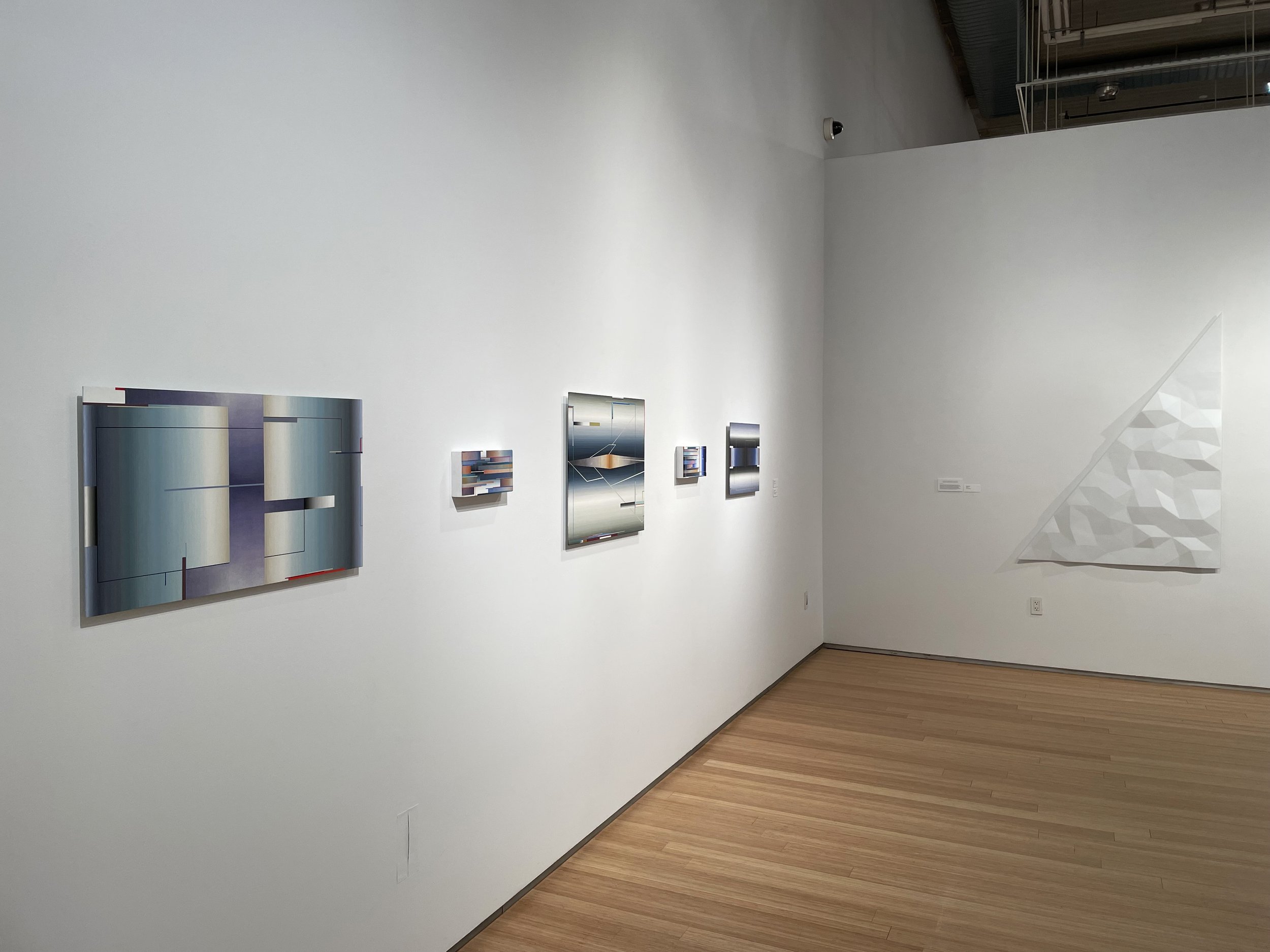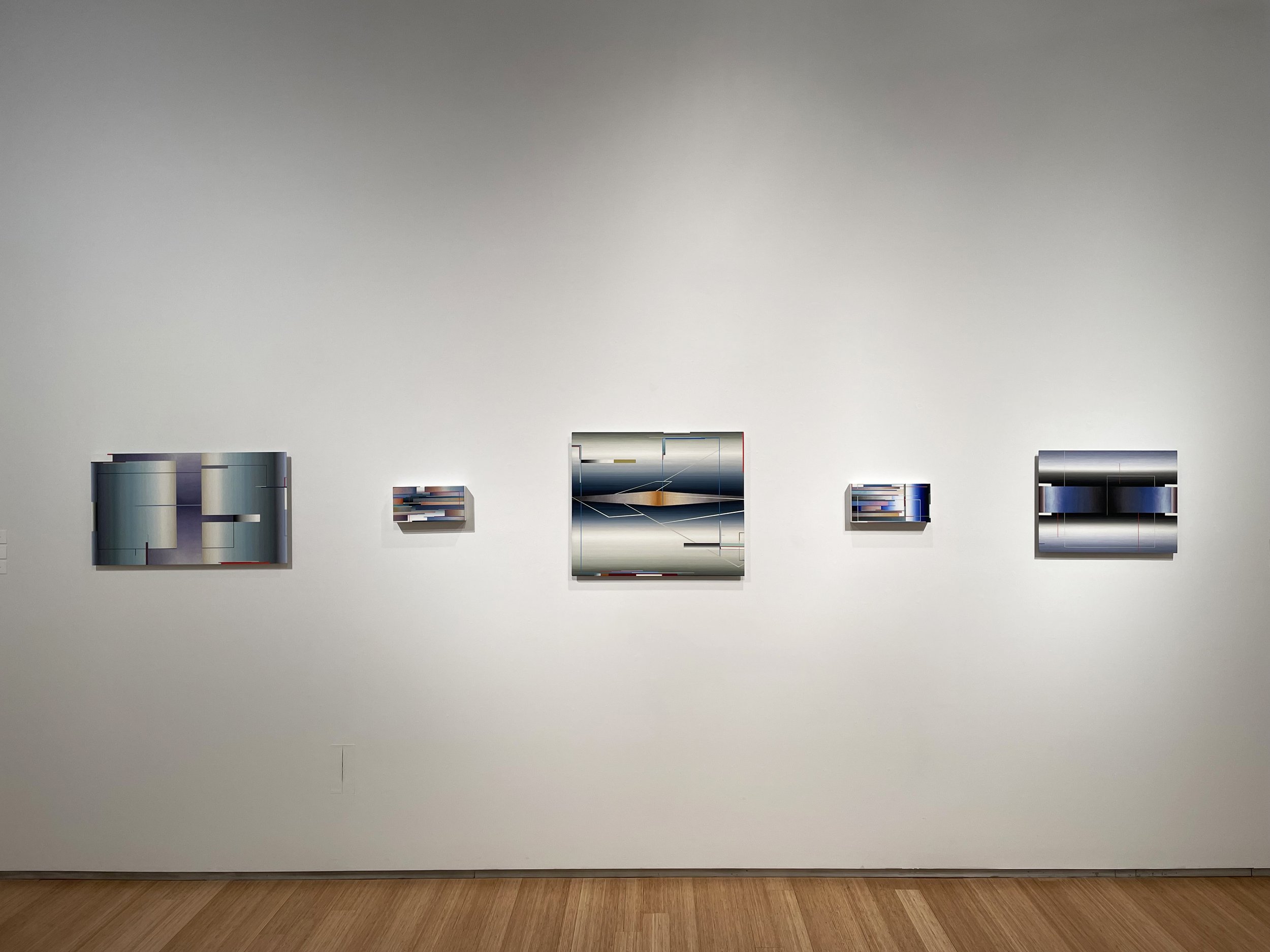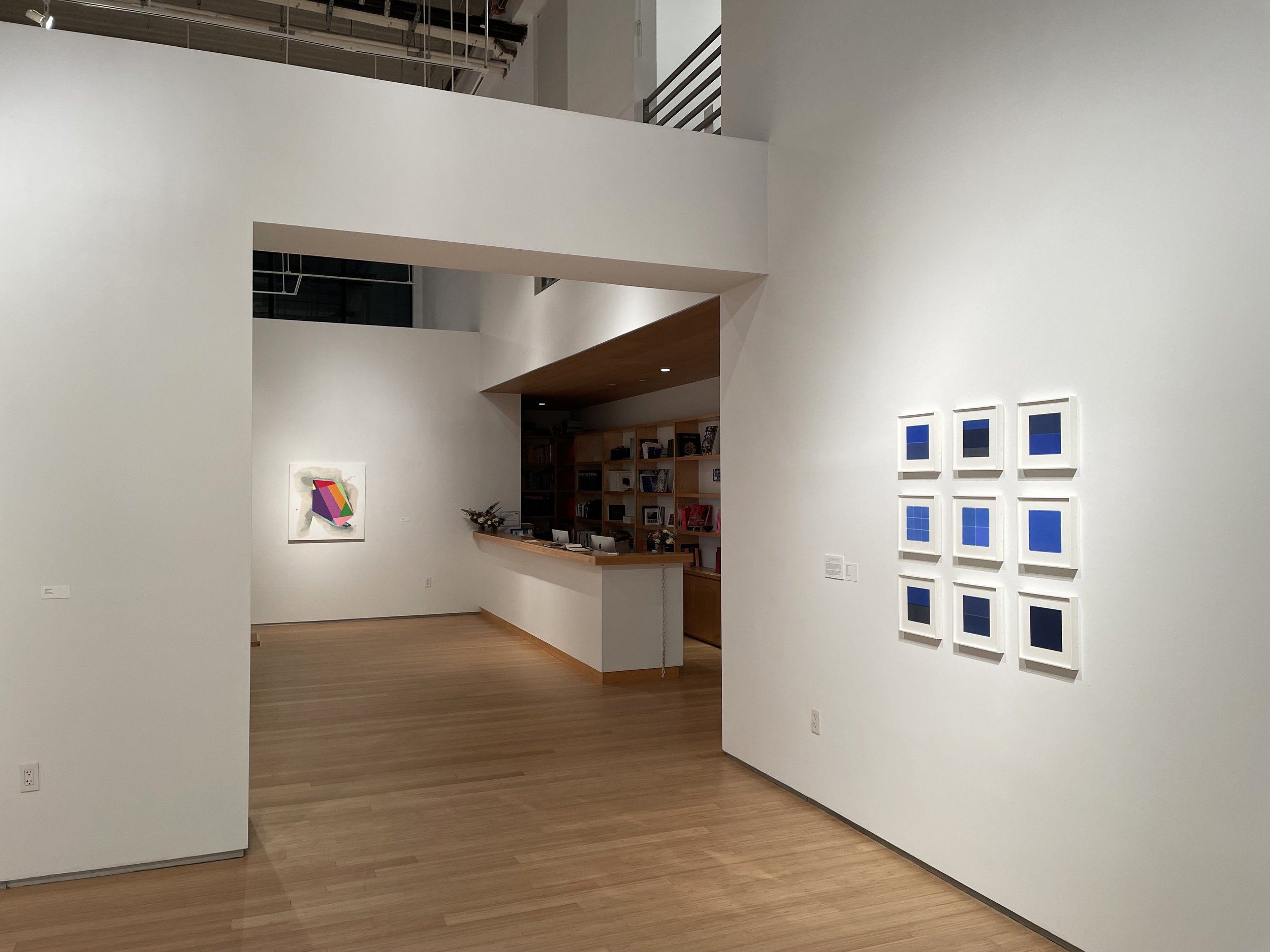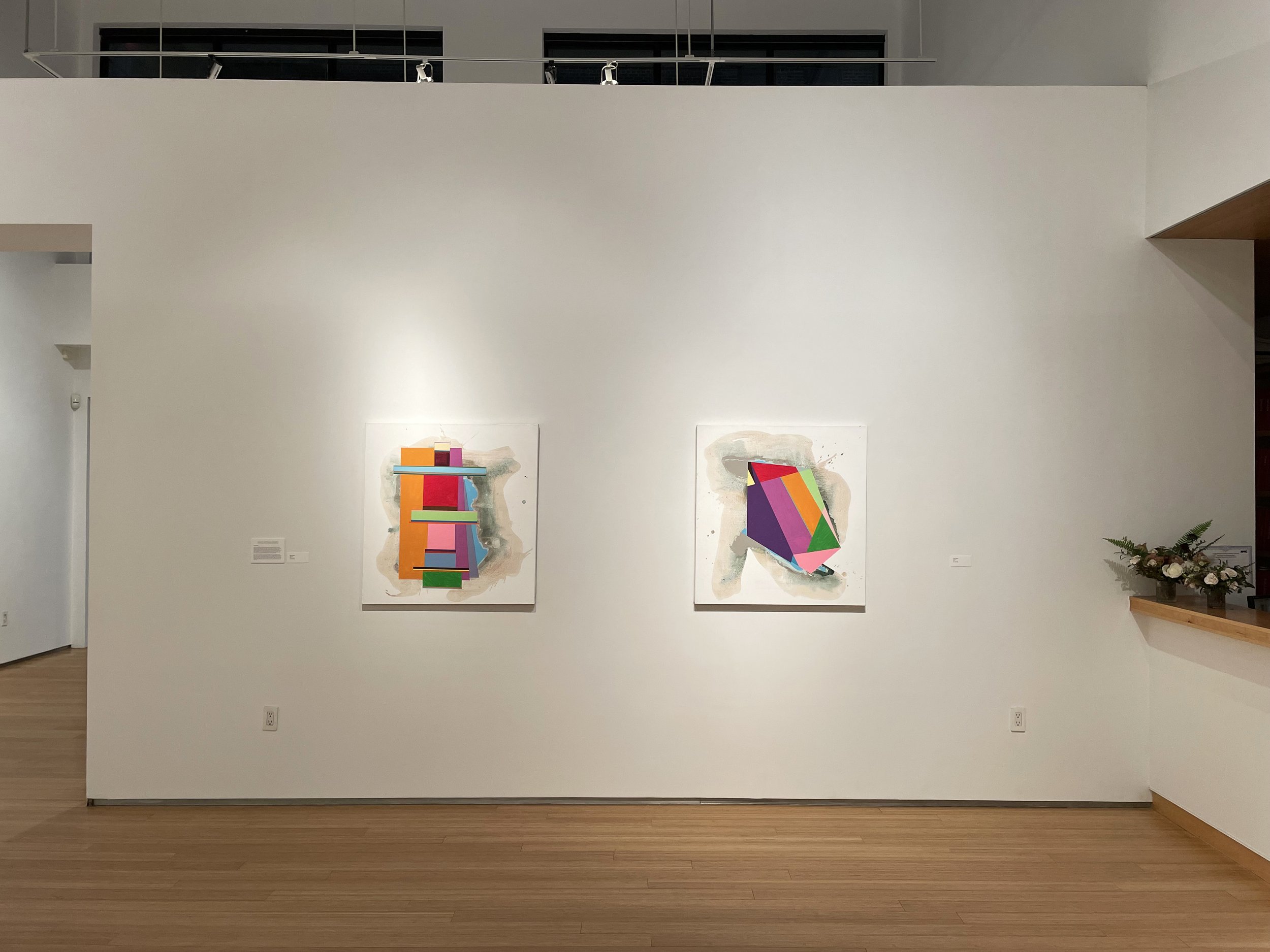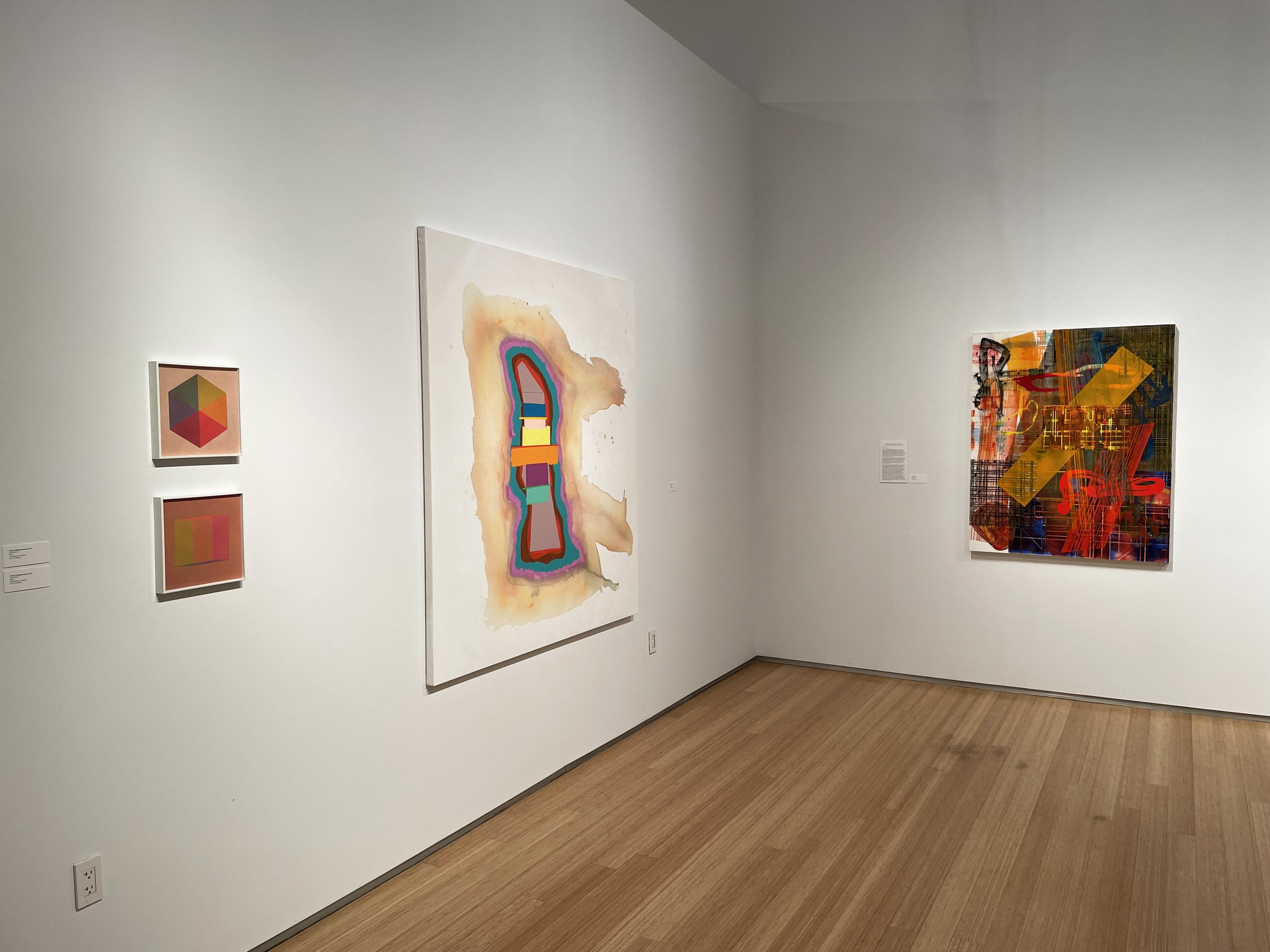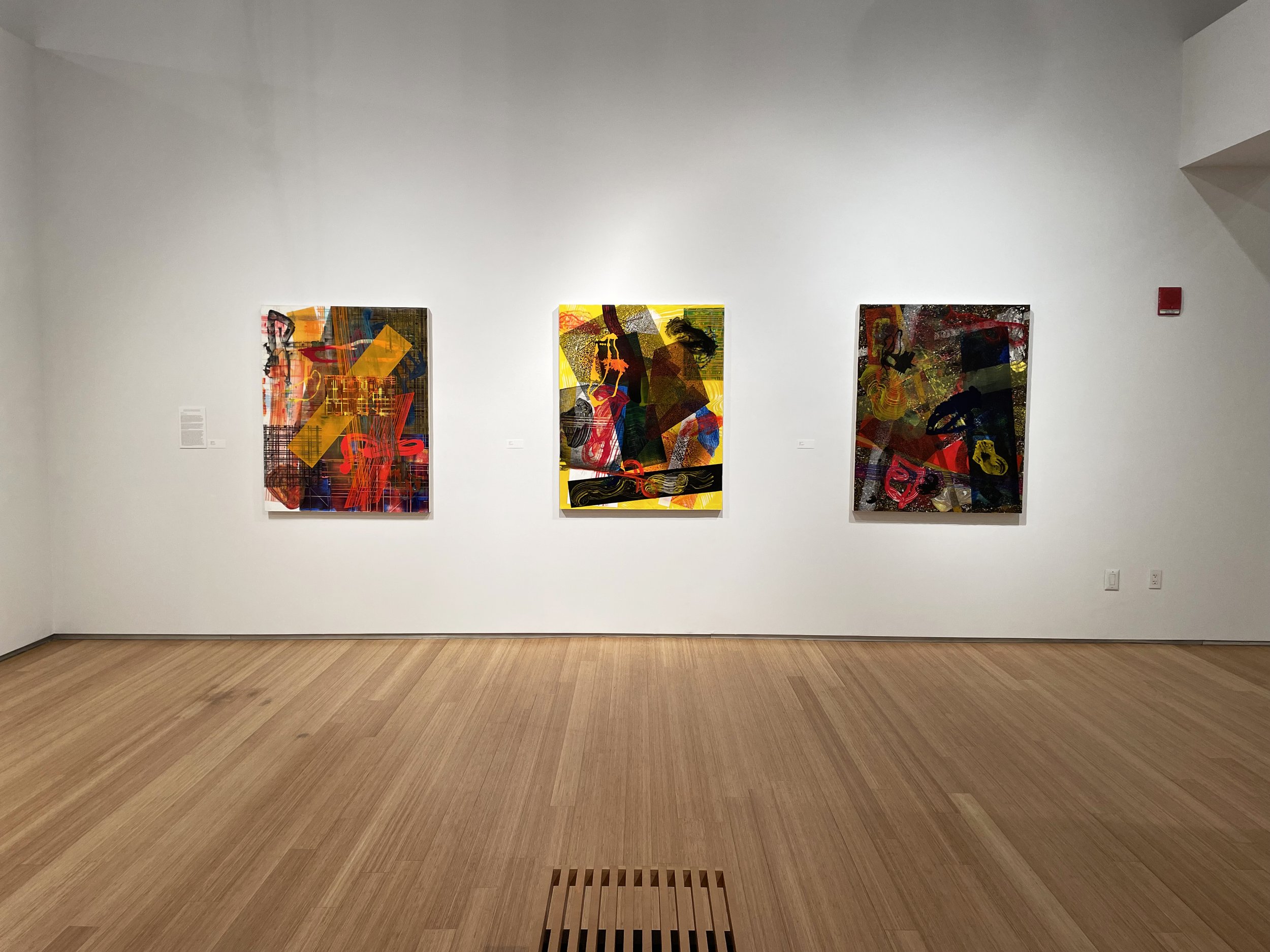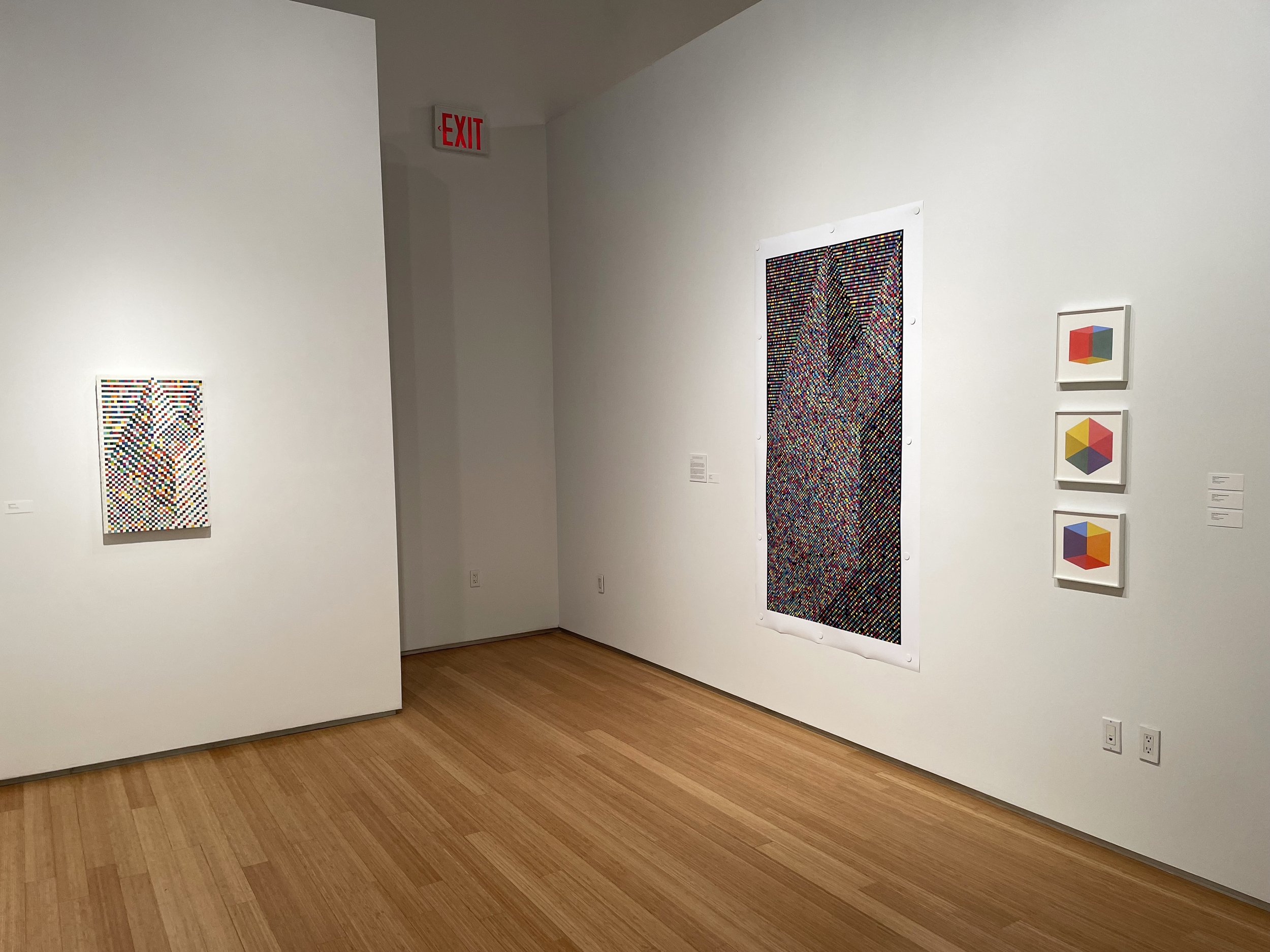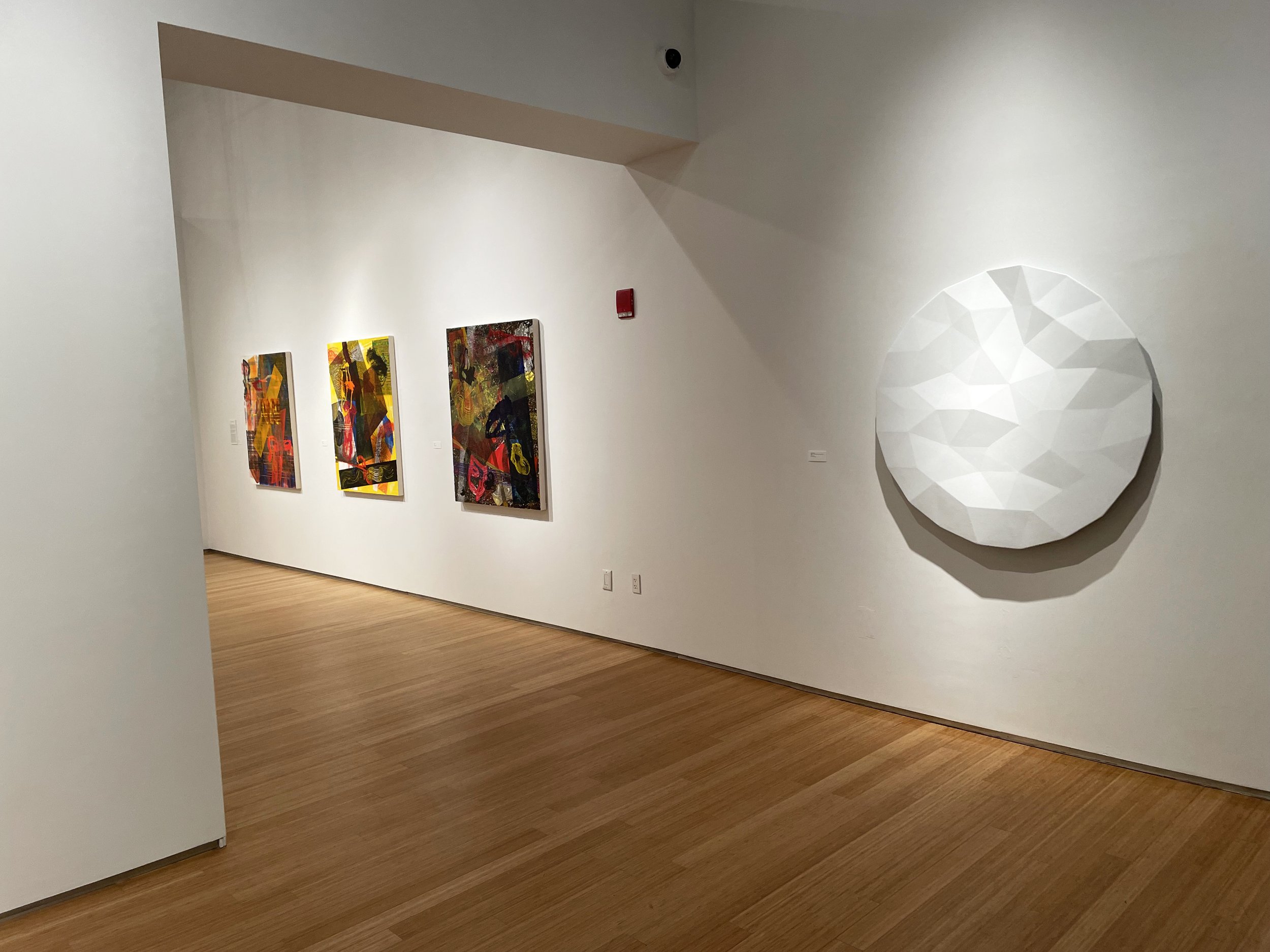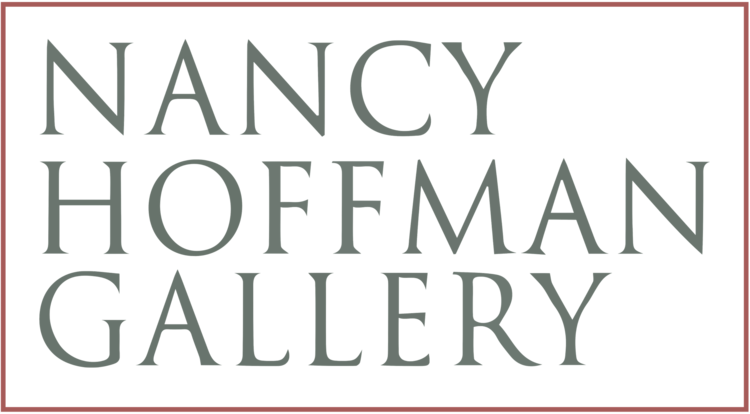Abstractions
Linda Mieko Allen - Rupert Deese - Nicole Phungrasamee Fein - Lynn McCarty - Frank Owen - Peter Plagens - Richard Purdy - Jesse Small
January 12 - March 4, 2023
On January 12, 2023 Nancy Hoffman Gallery opens Abstractions, a show of paintings, sculpture, and watercolors by Linda Mieko Allen, Rupert Deese, Nicole Phungrasamee Fein, Lynn McCarty, Frank Owen, Peter Plagens, Rick Purdy and Jesse Small. In conjunction with the exhibition the gallery asked each artist to write a statement about Abstraction and its importance to them. These statements speak to the impetus for the show and the abiding life and vitality of abstraction in the painting of today. Below are just a few excerpts from some of the artists as an introduction to the work and the show. Each of the artists will be represented by three or more works to provide the viewer with a window into the range of the seven artist’s visions.
While there are many definitions of abstraction, a simple one says it all: Abstract art deals with ideas and frees the artist from issues of representation. Abstract art is about shape, form, color and space, not about depicting the real world. Many say abstract art is a 20th century invention, a modern movement. After World War II, abstract art became a dominant form of art in the United States, followed by Abstract Expressionism, an American phenomenon. Abstraction has been and continues to be part of the American art vernacular since it blossomed in the early 20th century.
Linda Mieko Allen
Abstraction is a state of mind… mysterious and cerebral. I tend to see the world through an abstract lens. I deconstruct by processing images into light, geometric shapes and color automatically. It’s years of looking as an artist… always looking to break down elements into usable parts to reconstruct a new system.
Recent work, “Thin Air,” is an observation of the manifestations of light, atmosphere and space relation. During the pandemic I started to notice a visible change in atmosphere and light as pollution lessened. I documented the change in photographs almost every day. I use these in the work as altered gel images as well as acrylic pigment.
Rupert Deese
Over the last thirty years I have built, shaped, and painted many variations distilled from the shapes of the various headwater regions of the Sierra Nevada. The tondo Upper Tuolumne and Upper Merced Rivers /3 incorporates the lovely spreading shapes of the Tuolumne and Merced Rivers’ headwaters using a modified version of a non-repeating tiling pattern invented by the English mathematician Roger Penrose. The two triangular shapes entitled Vogelsang /1 and /2 follow and model the beautiful contours of the Mono Lake Basin, the rise to the Tuolumne River headwater and the Merced River headwater.
Nicole Phungrasamee Fein
There is a home in Ashland, Oregon. It is seamlessly set into the hillside and exudes a sense of composed tranquility. I can’t see inside, but I imagine what it feels like, taking cues from its exquisite Japanese garden. I strive with blues and grays to emulate this imagined space. I bring the feeling of the outside in. Colors come from the sky. Thick soft cotton blotter paper absorbs colored water. Sound is muffled. Precise edges soften. The texture is that of felt. Intense saturation of color creates warmth. It is quiet and calm. We are inside.
Abstraction gives me freedom, a freedom of movement between interior and exterior, but one onto which I self-impose structure and parameters. Working with the clarity, simplicity, and symmetry of the square, I find infinite possibilities within these strict parameters. The stillness and stability of the square are offset by its potential expansion, equal in all directions. There is always more beyond what is visible.
Lynn McCarty
My desire in building a painting is to harness moments of energy, coax an unexpected physical interaction, create a tension between structure and gesture. I hope to grab the viewer into the physicality of the surface, and the layered image, asking the viewer to ponder the relationship between layered pieces of paint and poured swaths of color. I am obsessed with color, which brings joy, suggests emotion and creates visual voices.
The works included in “Abstraction” continue my absorption in the qualities of a painting that invite the eye to wander and experience the spaces within – working from a place of spontaneous intuition. I chase natural formations and invite surprise bonding between shapes and spaces. A sharp wrinkle creates a flowing line, a hard edge creates a pooling dam, a loose scrap swirls to a different position. As the liquid paint layers and moves through the piece with its own materiality and gravity, an image or story slowly evolves. I search for a balance of intention and insouciance with dynamic movement. Quoting from a painting by John Baldessari sums up well my difficulty putting words to my pieces.
WHAT IS PAINTING?
DO YOU SENSE HOW ALL THE PARTS OF A GOOD PICTURE ARE INVOLVED WITH EACH OTHER, NOT JUST PLACED SIDE BY SIDE? ART IS A CREATION FOR THE EYE AND CAN ONLY BE HINTED AT WITH WORDS.
John Baldessari 1966-68 “What is Painting” synthetic polymer paint on canvas.
Frank Owen
Abstraction/Attraction
I came of age in the energetic and expansive “Post WWII” era. The word “Modern” was attached to objects, beliefs and ideas. It was an adjective that described how we and our world should be. Modern Art was a lively avenue of exploration. A main lane was “Abstract Art” and its extension: “Action Painting.” I became aware of this direction in the late 1950s and made paintings that explored it in diverse ways. By the end of the 60s, I had made abstract works that involved: multiple shaped canvases that could be joined together in different groupings and had also made gridded pointillist color field paintings. I had also received a BA and MA from UC Davis. There, I made friends with Stephen Kaltenbach and Bruce Nauman, younger art students who were soon to add to the depth and breadth of art making.
A crucial modern material central to my work was the new kind of artist’s paint: water based acrylic. It offered many different and intriguing exploratory paths of use. I set out to follow many of them. As I am something of a materials and tools sort of painter, learning what could be done using this new painting was an exciting challenge. It could be used, when thinned, for staining canvas. It could be poured, scraped, splattered and delicately brushed on canvas, paper and panels. In the early 60s, I learned that it could be applied to sheets of polyethylene and later peeled off. The result would be marks and shapes that could be collaged together.
Over the six decades of my creative career, exploring ideas of what a painting can be and how it can be made has been my central concern. The guiding idea is that a non-representational abstract painting can offer a multitude of visual and physical possibilities. In the 1970s, I made large rapturous poured gestural paintings that had to be executed in one session (the longest – 36 hours, 25 gallons of white liquid paint and 200 cups of color). In the next decade, I painted acrylic onto and into engraved, embossed and layered surfaces of oil based plasticine clay. The complex surface would be backed with canvas and pulled and stretched. The resulting lines and forms and colors would be complex and sometimes “real” such as loops of rope in relief. This led to a version of abstractions that is about a “field” of diverse information (thanks, Bob Rauschenberg). This “field theory” has been an important theme in my work. The third important technical stage of making work has involved everything done to date and especially the early discovery of paint forms peeled from polyethylene. Now I make dozens of marks, spills, pours, sheets and many other kinds of painting information. These make a library of possibilities. New paintings are made on heavy sheets of poly using clear medium to adhere layer upon layer of painting information to create complex, dense spaces. When complete, it is backed with canvas, pulled and stretched. It is also seen for the first time. The front surface is smooth. The visual field is complex and sometimes mysterious. It can take a lot of looking to see. My creative path was lit for me in the late 1950s when I learned about abstract painting. It was an attraction that led to a wonderful adventure. It continues.
Peter Plagens
At 81 (and when this exhibition opens, on the doorstep of 82), my painter’s relation to abstraction is probably a bit different than those of younger artists. Abstract painting still had an historical impetus when as a student, I quit trying to imitate painterly figurative painting, and started looking seriously at the Abstract Expressionists, particularly Willem de Kooning and Hans Hofmann. To paint abstractly – or to have my abstract paintings considered seriously – back then meant that my abstract paintings (or those of any young painter) had to evidence some engagement with the history of abstract painting.
Now, nearly sixty years later, painting abstractly is simply a personal choice, freed of (or, if you’re still art-historically conscious, unsupported by modern art history) any need to acknowledge precedent. That’s probably a good thing as a whole, but I think it also takes some of the philosophical bones out of the corpus of abstract painting. I can’t specify exactly how my own painting now has to do with that, but I think/hope there’s something in them beside something quirky to look at.
Richard Purdy
The works presented continue with my exploration of programming an arrangement on a computer and extracting it to non-electronic media. These formations originate from Cellular Automata – grid based formations defined by a “Rule” that determines the identity of each element. While it is possible to generate Cellular Automata manually with pencil and graph paper, a computer produces them more efficiently. These examples use an 8 digit binary number between 0 and 255 as a “rule” that decides the identity – 1 or 0 – of the next block in successive rows written to the grid based on the identity of the 3 grid values immediately above it.
The complexity and integration of these patterns fascinate me both individually, with each creating an ordering that changes with scale, and across the entire run of the 256 possible starting points when viewed as a group.
Jesse Small
Abstraction is the building block of everyday life. A moment by itself, pulled from the flow of time and made permanent in steel and painting becomes abstract out of context. A lexicon, a language, or a code remain abstract until we understand them. Therefore abstraction allows for huge amounts of information and beauty to be slowly divulged over time.
The pieces in this show come from drawings I have been working on since 2007 right up until today. Compiled from hundreds of moments observing nature: the accidental shadow of a branch, the natural structures on Spanish moss, kelp, erosion. A reflection in water.
Stacking these patterns up into a layered wall piece creates a broader moment, a deeper breath, and a physical representation of time and erosion. The pieces are an open experiment into how information and story precipitates out of patterns. Being truly abstract, the story is open-ended so there is room for the viewer’s imagination to step in.


